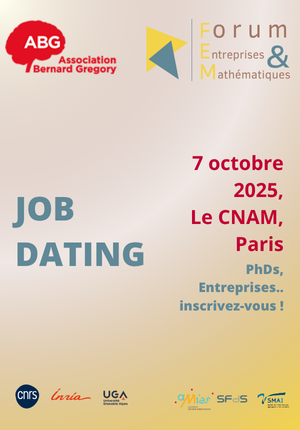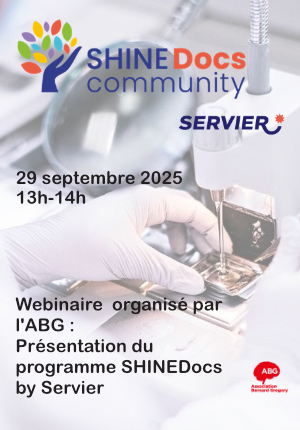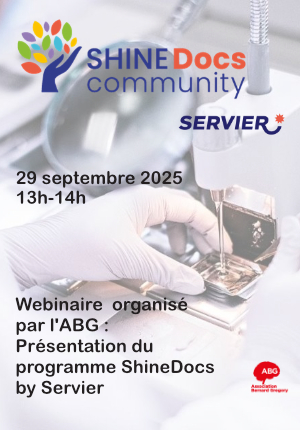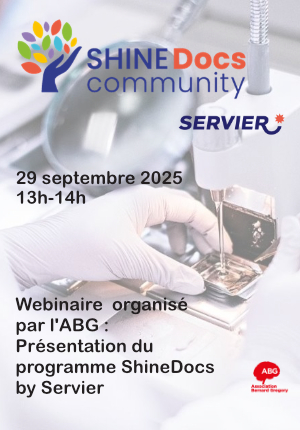Analyse multi-capteurs et modélisation du comportement collectif des abeilles : suivi individuel, interactions sociales et impact des stress environnementaux // Multi-sensor analysis and modeling of the collective behavior of bees: individual tracking, so
|
ABG-133211
ADUM-67251 |
Sujet de Thèse | |
| 27/08/2025 | Autre financement public |
IMT MINES ALES
Montpellier - Occitanie - France
Analyse multi-capteurs et modélisation du comportement collectif des abeilles : suivi individuel, interactions sociales et impact des stress environnementaux // Multi-sensor analysis and modeling of the collective behavior of bees: individual tracking, so
- Informatique
Signal multi-capteur, Signatures motrices, Synchronisation, Comportement collectif, Vision par ordinateur
Multi-sensor signal, Motor signatures, Synchronization, Collective beghaviour, Computer vision
Multi-sensor signal, Motor signatures, Synchronization, Collective beghaviour, Computer vision
Description du sujet
Cette thèse s'inscrit dans le cadre du projet Multisensor Analysis and Modeling of Honeybee Superorganism Behavior, qui vise à caractériser la dynamique collective des abeilles en intégrant des approches de vision par ordinateur, d'analyse de données et de modélisation statistique.
L'objectif principal est de quantifier le comportement individuel et collectif des abeilles au sein de la ruche en utilisant des techniques avancées de suivi et de classification. Le travail de recherche sera organisé autour des axes suivants :
1. Détection et suivi des abeilles : Développement d'algorithmes de vision par ordinateur pour identifier et suivre chaque abeille à partir d'images haute résolution, tout en caractérisant leur morphologie, leur pose et leurs interactions avec leurs congénères (notamment à l'intérieur de la ruche, avec des caméras infrarouges).
2. Extraction et classification des comportements stéréotypés : Amélioration du logiciel Beeterface pour annoter les vidéos et extraire automatiquement des comportements typiques par apprentissage supervisé et non supervisé.
3. Analyse statistique des trajectoires et de l'organisation spatiale : Modélisation des structures et dynamiques collectives des abeilles par des outils issus de la physique statistique, permettant d'étudier la propagation des interactions sociales au sein des cohortes.
4. Évaluation des effets des stress environnementaux : Corrélation des modifications comportementales avec des paramètres externes (température, humidité, qualité de l'air, présence de prédateurs, etc.) via des analyses statistiques avancées (ACP, PPA, réseaux de neurones profonds).
Les travaux s'appuieront sur une base de données unique constituée d'enregistrements vidéo en continu de plusieurs colonies d'abeilles sur une période de quatre ans. Cette thèse vise à fournir une compréhension approfondie du fonctionnement collectif de la ruche et à proposer des outils de diagnostic pour l'évaluation de son état de santé.
------------------------------------------------------------------------------------------------------------------------------------------------------------------------
------------------------------------------------------------------------------------------------------------------------------------------------------------------------
This thesis is part of the Multisensor Analysis and Modeling of Honeybee Superorganism Behavior project, which aims to characterize the collective dynamics of bees by integrating computer vision, data analysis, and statistical modeling approaches.
The main objective is to quantify the individual and collective behavior of bees within the hive using advanced tracking and classification techniques. The research work will be organized around the following areas:
1. Bee detection and tracking: Development of computer vision algorithms to identify and track each bee from high-resolution images, while characterizing their morphology, posture, and interactions with their fellow bees (particularly inside the hive, using infrared cameras).
2. Extraction and classification of stereotypical behaviors: Improvement of the Beeterface software to annotate videos and automatically extract typical behaviors through supervised and unsupervised learning.
3. Statistical analysis of trajectories and spatial organization: Modeling the collective structures and dynamics of bees using tools from statistical physics, enabling the study of the propagation of social interactions within cohorts.
4. Assessment of the effects of environmental stress: Correlation of behavioral changes with external parameters (temperature, humidity, air quality, presence of predators, etc.) using advanced statistical analyses (ACP, PPA, deep neural networks).
The work will be based on a unique database consisting of continuous video recordings of several bee colonies over a period of four years. This thesis aims to provide an in-depth understanding of the collective functioning of the hive and to propose diagnostic tools for assessing its health status.
------------------------------------------------------------------------------------------------------------------------------------------------------------------------
------------------------------------------------------------------------------------------------------------------------------------------------------------------------
Début de la thèse : 01/10/2025
WEB : https://anr.fr/Project-ANR-24-CE45-3787
L'objectif principal est de quantifier le comportement individuel et collectif des abeilles au sein de la ruche en utilisant des techniques avancées de suivi et de classification. Le travail de recherche sera organisé autour des axes suivants :
1. Détection et suivi des abeilles : Développement d'algorithmes de vision par ordinateur pour identifier et suivre chaque abeille à partir d'images haute résolution, tout en caractérisant leur morphologie, leur pose et leurs interactions avec leurs congénères (notamment à l'intérieur de la ruche, avec des caméras infrarouges).
2. Extraction et classification des comportements stéréotypés : Amélioration du logiciel Beeterface pour annoter les vidéos et extraire automatiquement des comportements typiques par apprentissage supervisé et non supervisé.
3. Analyse statistique des trajectoires et de l'organisation spatiale : Modélisation des structures et dynamiques collectives des abeilles par des outils issus de la physique statistique, permettant d'étudier la propagation des interactions sociales au sein des cohortes.
4. Évaluation des effets des stress environnementaux : Corrélation des modifications comportementales avec des paramètres externes (température, humidité, qualité de l'air, présence de prédateurs, etc.) via des analyses statistiques avancées (ACP, PPA, réseaux de neurones profonds).
Les travaux s'appuieront sur une base de données unique constituée d'enregistrements vidéo en continu de plusieurs colonies d'abeilles sur une période de quatre ans. Cette thèse vise à fournir une compréhension approfondie du fonctionnement collectif de la ruche et à proposer des outils de diagnostic pour l'évaluation de son état de santé.
------------------------------------------------------------------------------------------------------------------------------------------------------------------------
------------------------------------------------------------------------------------------------------------------------------------------------------------------------
This thesis is part of the Multisensor Analysis and Modeling of Honeybee Superorganism Behavior project, which aims to characterize the collective dynamics of bees by integrating computer vision, data analysis, and statistical modeling approaches.
The main objective is to quantify the individual and collective behavior of bees within the hive using advanced tracking and classification techniques. The research work will be organized around the following areas:
1. Bee detection and tracking: Development of computer vision algorithms to identify and track each bee from high-resolution images, while characterizing their morphology, posture, and interactions with their fellow bees (particularly inside the hive, using infrared cameras).
2. Extraction and classification of stereotypical behaviors: Improvement of the Beeterface software to annotate videos and automatically extract typical behaviors through supervised and unsupervised learning.
3. Statistical analysis of trajectories and spatial organization: Modeling the collective structures and dynamics of bees using tools from statistical physics, enabling the study of the propagation of social interactions within cohorts.
4. Assessment of the effects of environmental stress: Correlation of behavioral changes with external parameters (temperature, humidity, air quality, presence of predators, etc.) using advanced statistical analyses (ACP, PPA, deep neural networks).
The work will be based on a unique database consisting of continuous video recordings of several bee colonies over a period of four years. This thesis aims to provide an in-depth understanding of the collective functioning of the hive and to propose diagnostic tools for assessing its health status.
------------------------------------------------------------------------------------------------------------------------------------------------------------------------
------------------------------------------------------------------------------------------------------------------------------------------------------------------------
Début de la thèse : 01/10/2025
WEB : https://anr.fr/Project-ANR-24-CE45-3787
Nature du financement
Autre financement public
Précisions sur le financement
ANR Financement d'Agences de financement de la recherche
Présentation établissement et labo d'accueil
IMT MINES ALES
Etablissement délivrant le doctorat
IMT MINES ALES
Ecole doctorale
166 I2S - Information, Structures, Systèmes
Profil du candidat
- Vision par ordinateur et traitement d'images : expérience avec l'extraction d'informations à partir d'images ou de vidéos, techniques de détection et suivi d'objets.
- Apprentissage automatique et intelligence artificielle : maîtrise des méthodes supervisées et non supervisées (CNN, clustering, classification, etc.).
- Analyse statistique et modélisation : utilisation d'outils comme l'Analyse en Composantes Principales (ACP), la Projection Pursuit Analysis (PPA) et autres méthodes de physique statistique.
- Programmation et développement logiciel : bonne maîtrise de Python, avec des bibliothèques comme OpenCV, TensorFlow, PyTorch, Scikit-learn, et des outils d'analyse de données (Pandas, NumPy, Matplotlib).
- Traitement et gestion de données massives : manipulation de grandes bases de données d'images et vidéos, techniques d'annotation automatique et de suivi.
- Computer vision and image processing: experience with information extraction from images or videos, object detection and tracking techniques. - Machine learning and artificial intelligence: mastery of supervised and unsupervised methods (CNN, clustering, classification, etc.). - Statistical analysis and modeling: use of tools such as Principal Component Analysis (PCA), Projection Pursuit Analysis (PPA), and other statistical physics methods. - Programming and software development: good proficiency in Python, with libraries like OpenCV, TensorFlow, PyTorch, Scikit-learn, and data analysis tools (Pandas, NumPy, Matplotlib). - Processing and management of big data: manipulation of large image and video databases, automatic annotation and tracking techniques.
- Computer vision and image processing: experience with information extraction from images or videos, object detection and tracking techniques. - Machine learning and artificial intelligence: mastery of supervised and unsupervised methods (CNN, clustering, classification, etc.). - Statistical analysis and modeling: use of tools such as Principal Component Analysis (PCA), Projection Pursuit Analysis (PPA), and other statistical physics methods. - Programming and software development: good proficiency in Python, with libraries like OpenCV, TensorFlow, PyTorch, Scikit-learn, and data analysis tools (Pandas, NumPy, Matplotlib). - Processing and management of big data: manipulation of large image and video databases, automatic annotation and tracking techniques.
29/09/2025
Postuler
Fermer
Vous avez déjà un compte ?
Nouvel utilisateur ?
Besoin d'informations sur l'ABG ?
Vous souhaitez recevoir nos infolettres ?
Découvrez nos adhérents
 Laboratoire National de Métrologie et d'Essais - LNE
Laboratoire National de Métrologie et d'Essais - LNE  Institut Sup'biotech de Paris
Institut Sup'biotech de Paris  ASNR - Autorité de sûreté nucléaire et de radioprotection - Siège
ASNR - Autorité de sûreté nucléaire et de radioprotection - Siège  Nokia Bell Labs France
Nokia Bell Labs France  PhDOOC
PhDOOC  Groupe AFNOR - Association française de normalisation
Groupe AFNOR - Association française de normalisation 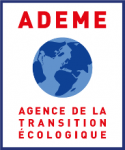 ADEME
ADEME  ONERA - The French Aerospace Lab
ONERA - The French Aerospace Lab  Ifremer
Ifremer  Tecknowmetrix
Tecknowmetrix  CESI
CESI  MabDesign
MabDesign  Aérocentre, Pôle d'excellence régional
Aérocentre, Pôle d'excellence régional  SUEZ
SUEZ  CASDEN
CASDEN 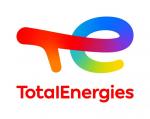 TotalEnergies
TotalEnergies  Généthon
Généthon 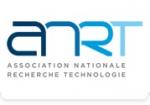 ANRT
ANRT  MabDesign
MabDesign

